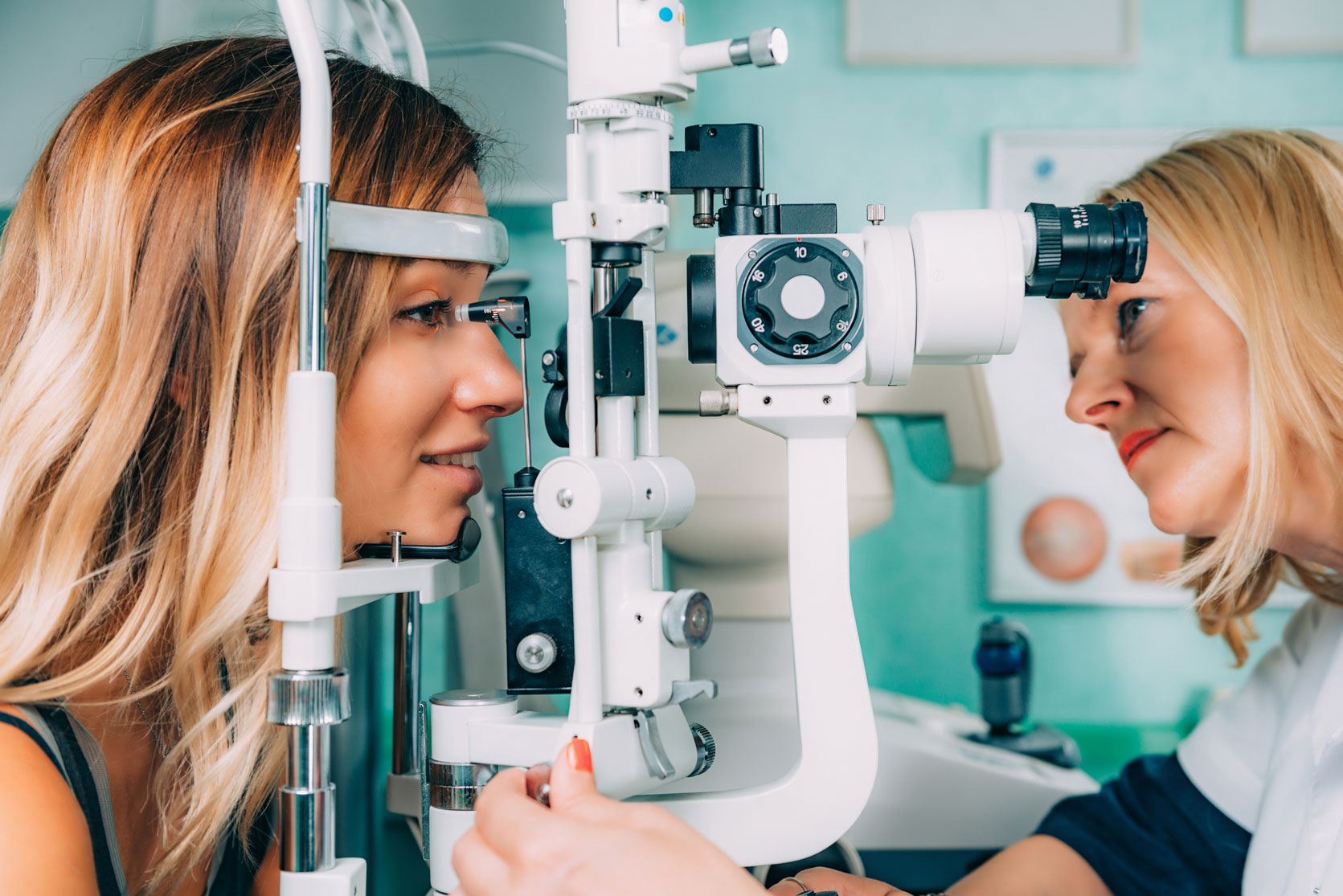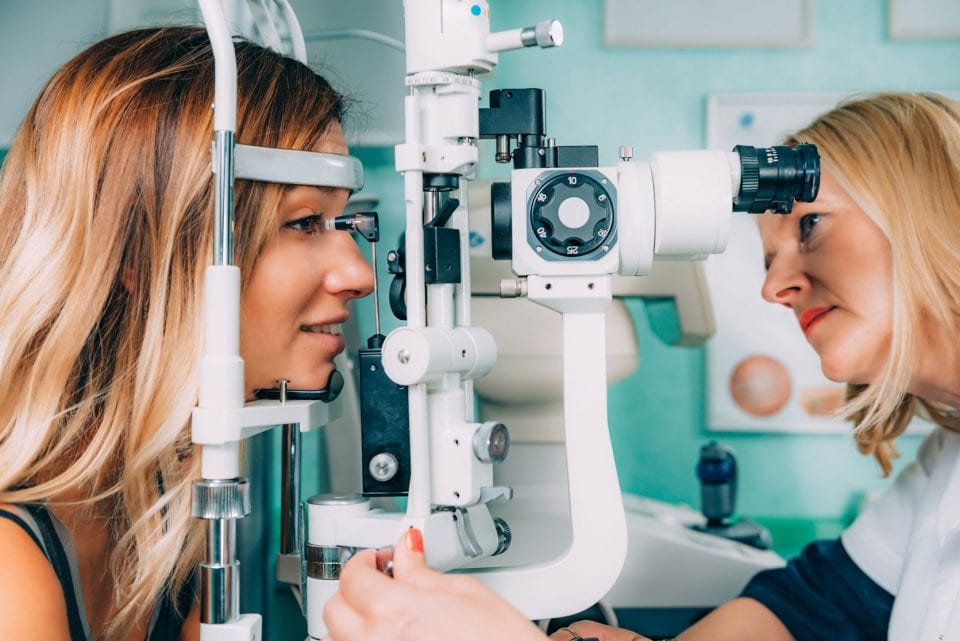
Glaucoma
What is Glaucoma?
Glaucoma is a disease of the optic nerve – the part of the eye that carries the images we see to the brain. The optic nerve is made up of many nerve fibers, like an electric cable containing numerous wires. When damage to the optic nerve fibers occurs, blind spots develop. These blind spots usually go undetected until the optic nerve is significantly damaged. If the entire nerve is destroyed, blindness results.
What Causes Glaucoma?
Clear liquid called aqueous humor circulates inside the front portion of the eye. To maintain a healthy level of pressure within the eye, a small amount of this fluid is produced constantly while an equal amount flows out of the eye through a microscopic drainage system. Because the eye is a closed structure, if the drainage area for the aqueous humor is blocked, the excess fluid cannot flow out of the eye and fluid pressure within the eye increases, pushing against the optic nerve and causing damage.
Who is at risk for Glaucoma?
Your eye care professional considers many kinds of information to determine your risk for developing the disease. The most important risk factors include:
- Older age
- Elevated eye pressure
- Family history of glaucoma
- African or Hispanic ancestry
- Nearsightedness
- Past eye injuries
- Thinner central corneal thickness
- Systemic health problems, including diabetes, migraine headaches and vascular disorders
- Pre-existing thinning of the optic nerve
- Steroid use
Your eye care professional will weigh all these factors before deciding whether you need treatment for glaucoma, or whether you should be monitored closely as a potential glaucoma patient. This means your risk of developing glaucoma is higher than normal, and you need to have regular examinations to detect the early signs of damage to the optic nerve.
Different Types of Glaucoma
Primary open-angle glaucoma – This is the most common form of glaucoma in the United States.
The risk of developing primary open-angle glaucoma increases with age. The drainage angle of the eye becomes less efficient over time, and pressure within the eye gradually increases, which can damage the optic nerve. In some patients, the optic nerve becomes sensitive even to normal eye pressure and is at risk for damage. Treatment is necessary to prevent further vision loss.
Typically, open-angle glaucoma has no symptoms in its early stages, and vision remains normal. As the optic nerve becomes more damaged, blank spots begin to appear in your field of vision. You typically won’t notice these blank spots in your day to day activities until the optic nerve is significantly damaged and these spots become large. If all the optic nerve fibers die, blindness results.
Closed-angle glaucoma – Some eyes are formed with the iris (the colored part of the eye) too close to the drainage angle. In these eyes, which are often small and farsighted, the iris can be pushed forward, blocking the drainage channel completely. Since the fluid cannot exit the eye, pressure inside the eye builds rapidly and causes an acute closed-angle attack.
Symptoms may include:
- Blurred vision
- Severe eye pain
- Headache
- Rainbow-colored halos around lights
- Nausea and vomiting
This is a true eye emergency. If you have any of these symptoms, call your ophthalmologist immediately. Unless this type of glaucoma is treated quickly, blindness can results.
*Two-thirds of those with closed-angle glaucoma develop it slowly without any symptoms prior to an attack.
How is Glaucoma Detected?
Regular eye examinations by your ophthalmologist are the best way to detect glaucoma. A glaucoma screening that checks only the pressure of the eye is not sufficient to determine if you have glaucoma. The only sure way to detect glaucoma is to have a complete eye examination.
During your glaucoma evaluation, your ophthalmologist will:
- Measure your intraocular pressure
- Inspect the drainage angle of your eye
- Evaluate whether or not there is any optic nerve damage
- Test the peripheral vision of each eye (visual field testing or perimetry)
Photography of the optic nerve or other computerized imaging may also be recommended. Some of these tests may not be necessary for everyone. These tests may need to be repeated on a regular basis to monitor any changes in your condition.
Loss of Vision can be prevented
Regular medical eye exams can help prevent unnecessary vision loss.
People at any age with symptoms or risk factors for glaucoma, such as those with diabetes, a family history of glaucoma or those of African descent, should see an ophthalmologist for an exam. Your ophthalmologist will let you know how often to return for follow-up eye exams.
Adults with no symptoms of or risk factors for eye disease should have a complete screening at age 40 – the time when early signs of disease and changes in vision may start to happen. Based on the results of the initial screening, your ophthalmologist will let you know how often to return for follow-up exams.
Adults 65 years or older should have an eye exams every one to two years or as recommended by your ophthalmologist.
Glaucoma Services
Lowering eye pressure is the only proved way to treat glaucoma.
Schedule An Appointment
Make an appointment with our ophthalmologist specialist today.
Ophthalmology Signs & Symptoms
The most common signs and symptoms, and risk factors of eye disease seen in our ophthalmology patients from Pinehurst, Southern Pines, Fayetteville, and beyond.
Our Ophthalmologist Provider
Leading Ophthalmologist in Pinehurst, Southern Pines, Fayetteville, NC & Beyond.




